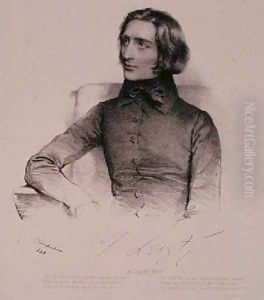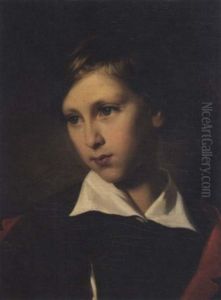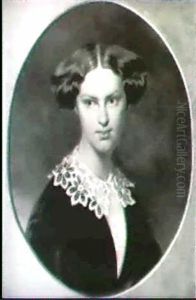Fritz Kriehuber Paintings
Fritz Kriehuber, originally Josef Kriehuber, was an Austrian lithographer and painter, renowned for his portrait work, who left a significant mark on 19th-century European art. Born on May 14, 1800, in Vienna, Austria, Kriehuber embarked on his artistic journey at a young age, showing an early interest in drawing and painting. He was initially trained by his father, Johann Kriehuber, before entering the Vienna Academy of Fine Arts. His education and natural talent laid the foundation for a career that would flourish over the decades.
Kriehuber's work primarily focused on lithography, a printmaking technique that was gaining popularity at the time for its ability to produce sharp, detailed images. By the 1820s, he had established himself as a prominent lithographer, capturing the likenesses of notable figures of his era, including European royalty, artists, musicians, and politicians. His ability to convey not just the physical appearance but also the personality and stature of his subjects earned him widespread acclaim.
Throughout his career, Kriehuber was not just a chronicler of faces but also a documentarian of the changing societal and cultural landscapes of the 19th century. His portraits serve as historical records, offering insights into the fashion, attitudes, and aesthetics of the time. He was especially famed for his detailed and expressive portrayal of eyes, which many believe added a depth of character to his portraits.
Kriehuber's influence extended beyond his immediate circle, impacting the development of portrait lithography across Europe. His works were highly sought after, and he became the portraitist of choice for the elite. Despite the rise of photography in the latter part of the 19th century, Kriehuber's portraits remained in demand, testament to his skill and the unique insight his works provided into his subjects.
He continued to work and teach in Vienna until his death on May 30, 1876. Today, Fritz Kriehuber is remembered not only as a master lithographer but also as a key figure in the art world of 19th-century Austria. His legacy is preserved in the collections of major museums and galleries, where his portraits continue to be admired for their historical value and artistic merit.


